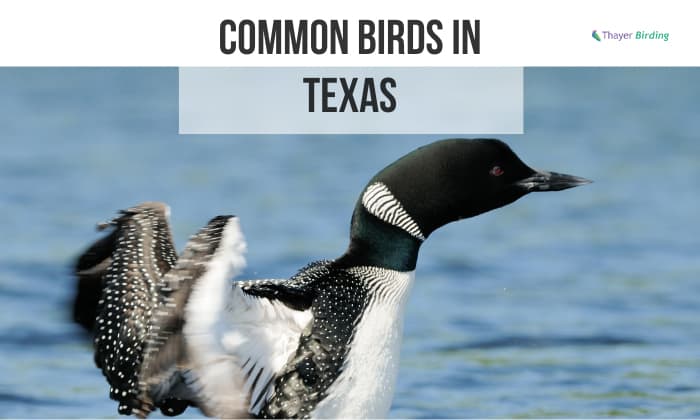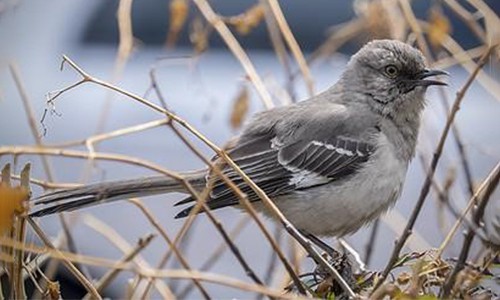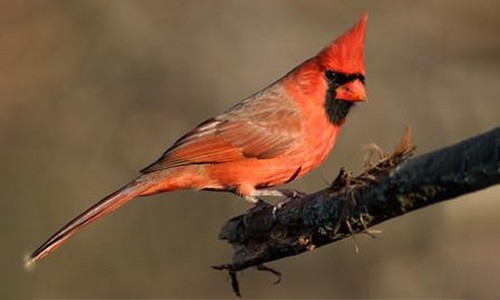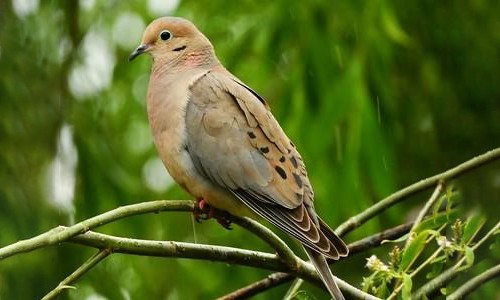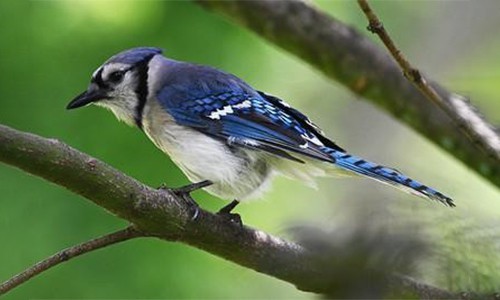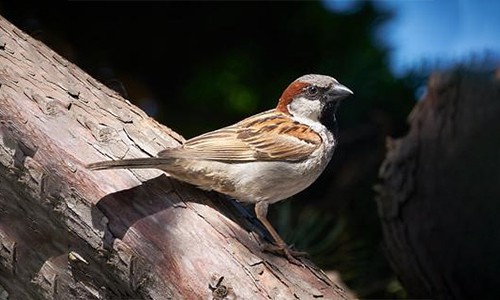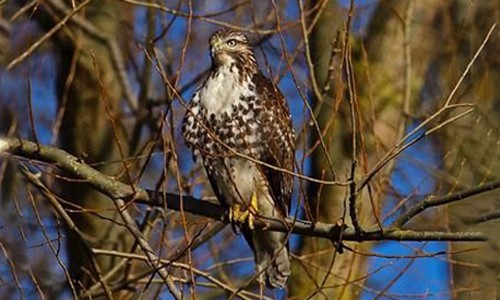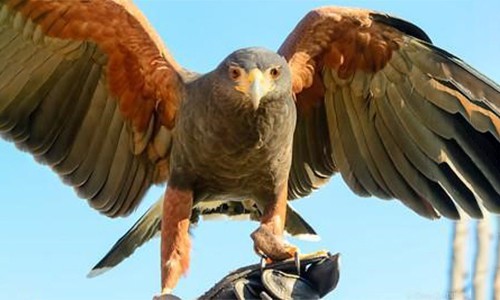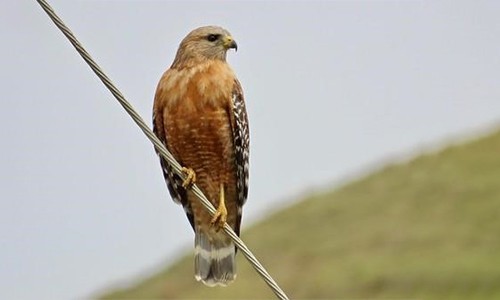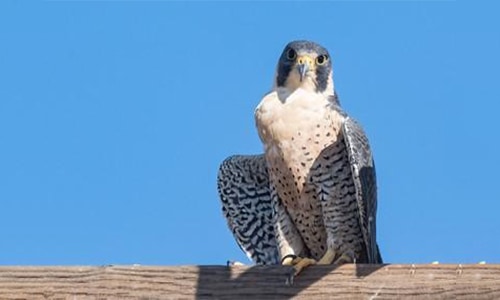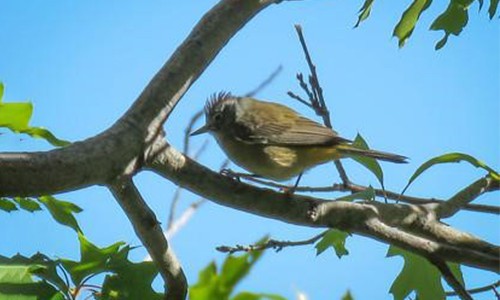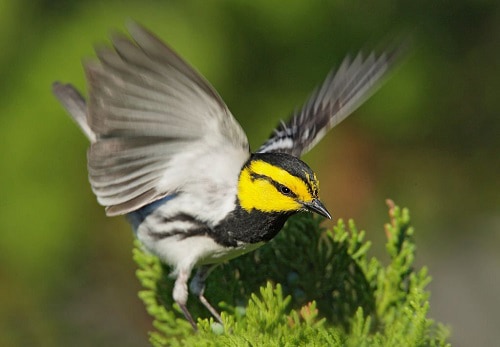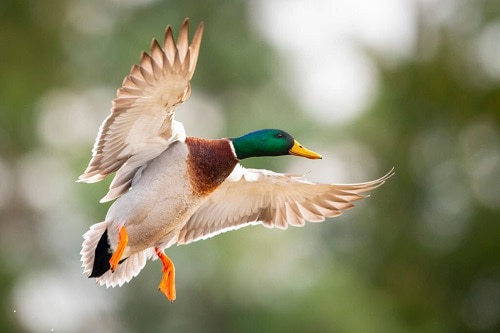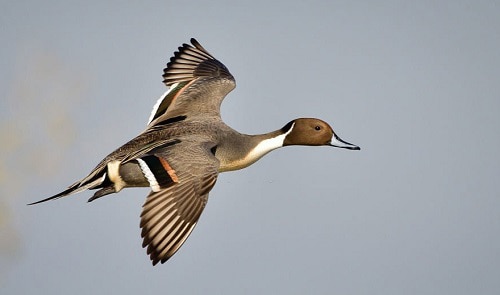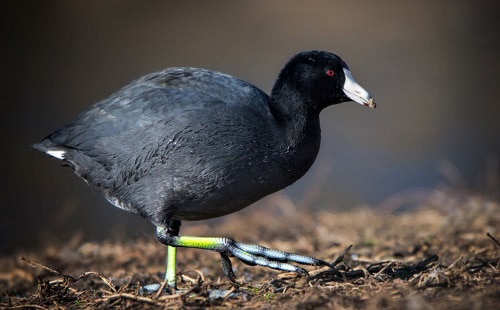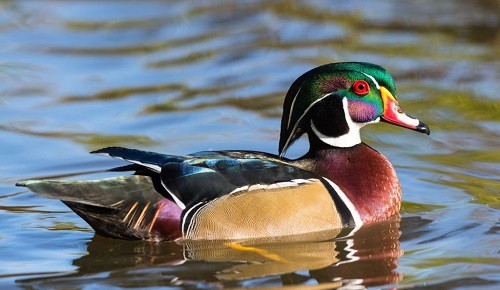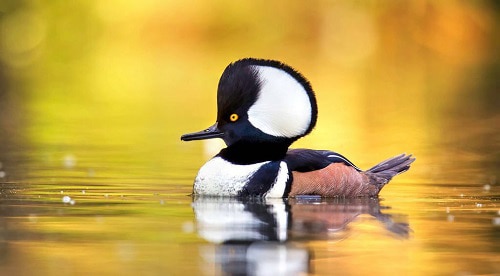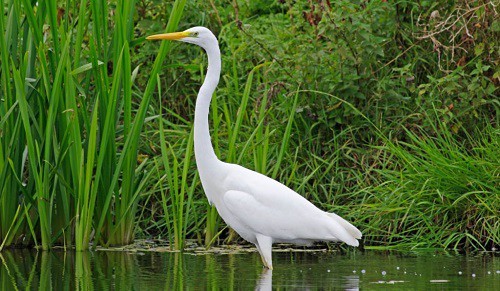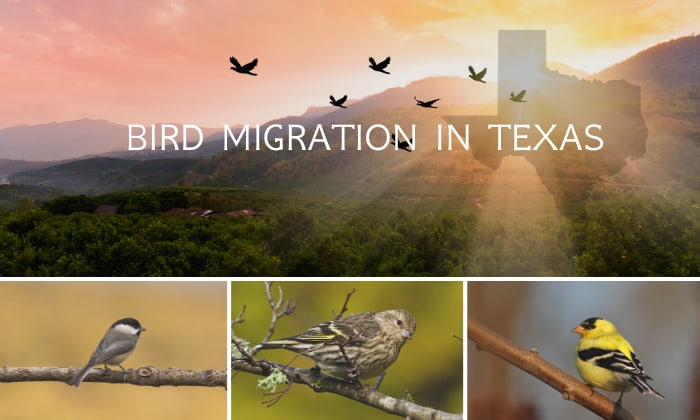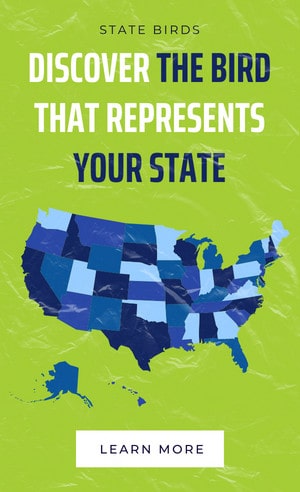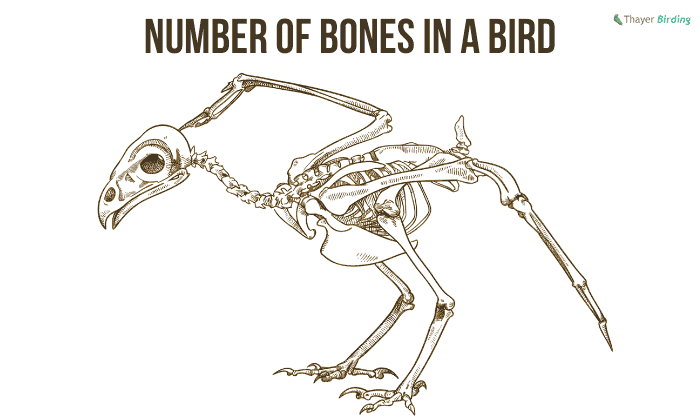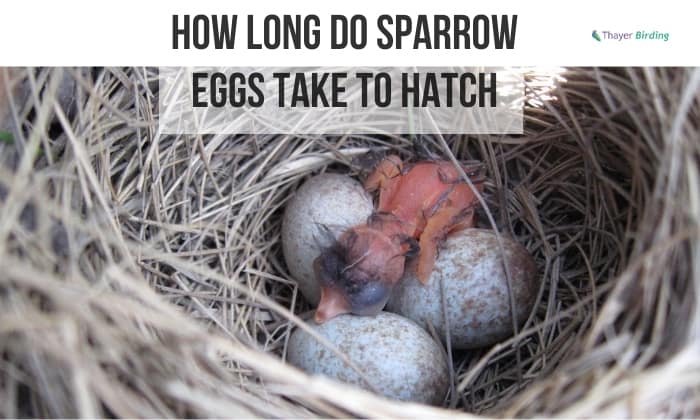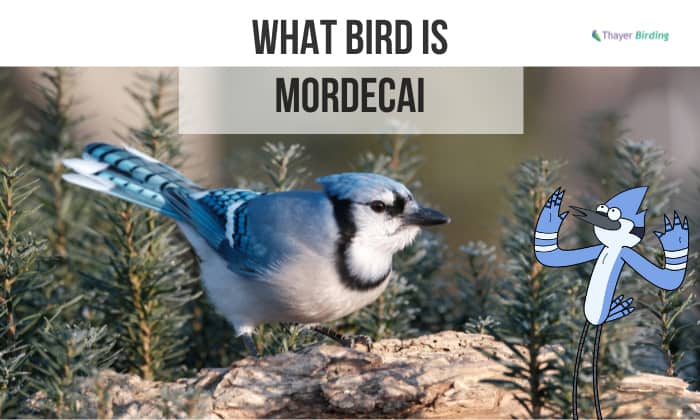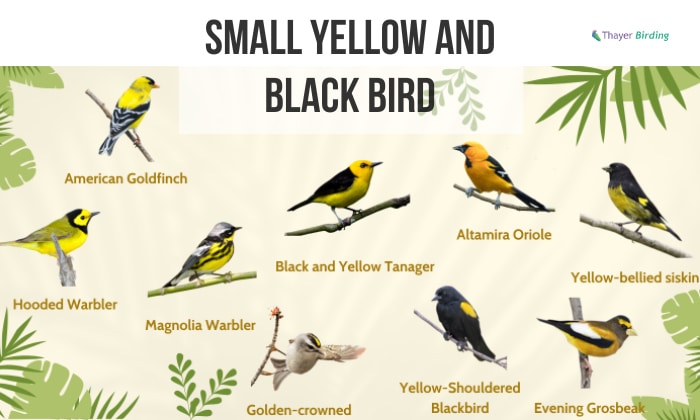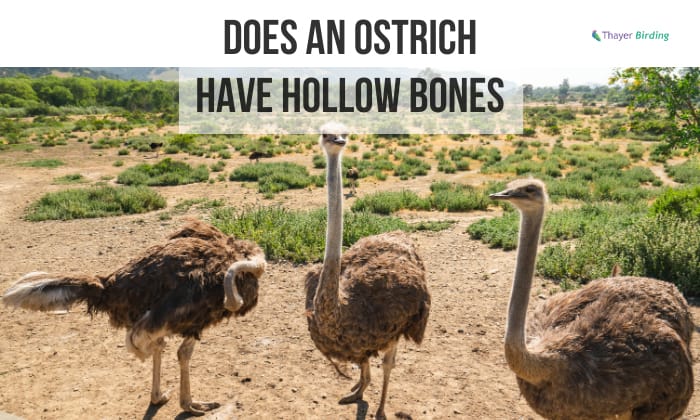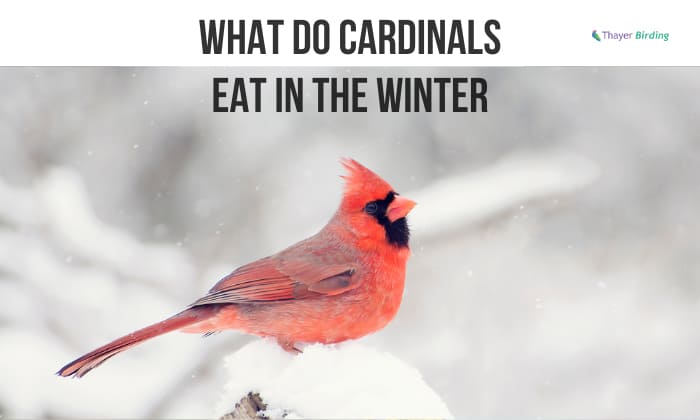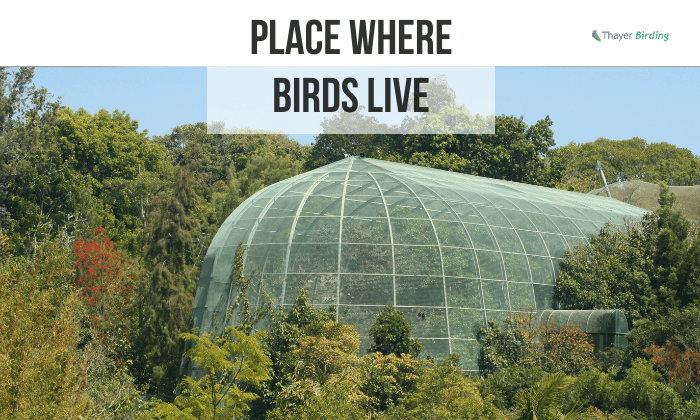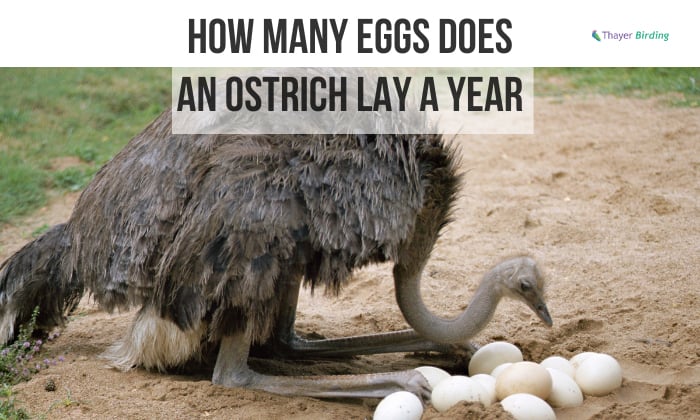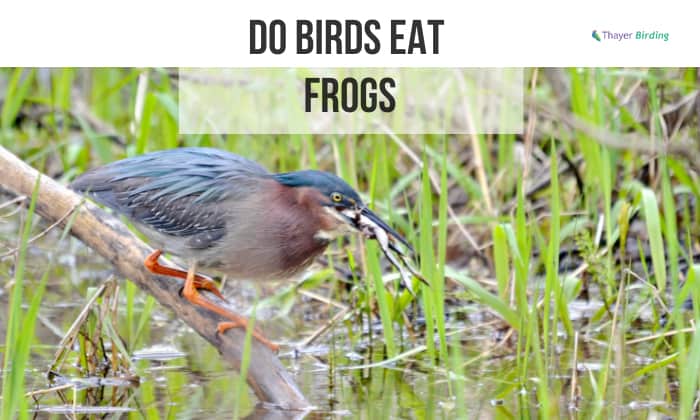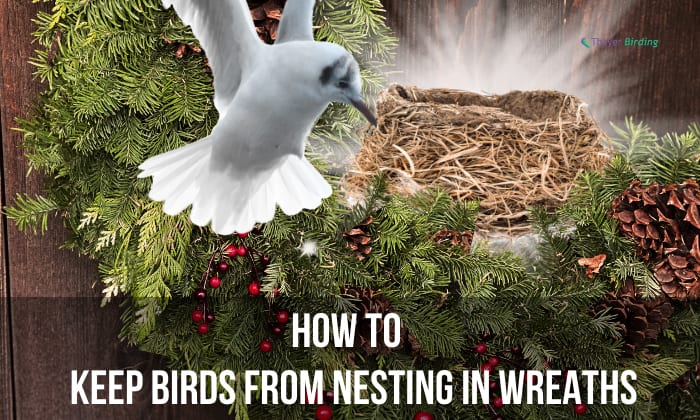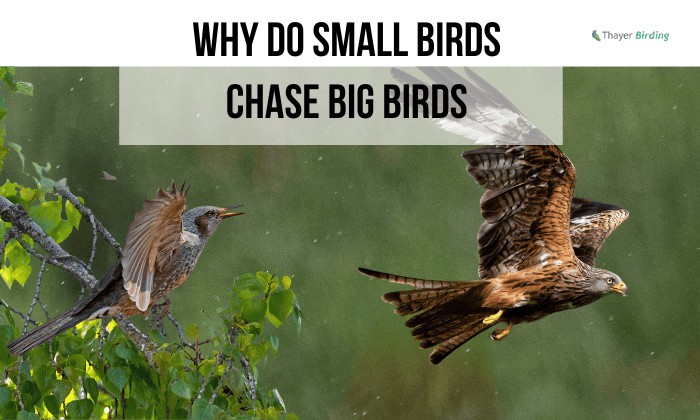There are over 600 bird species recorded in Texas, which is more than most other states. But why? It’s because of the state’s location, which is in the center of the continent. This means birds from the east and west, as well as those in Mexico, visit Texas.
Among all these species, common birds in Texas are regularly seen in gardens and easily spotted anywhere in the state. Read this article to learn more.
Texas Backyard Birds
Texas is a big state and home to a wide variety of habitats. It is no surprise to find hundreds of avian species within its 800 miles. And the most common ones you see in your backyard are on this list.
Let’s get to know birds native to Texas.
1. Northern Mockingbird
Known as the official state bird of Texas, this medium-sized songbird is known for its small head and slender tail. You can see their white wing bars—their most distinct feature—while in flight. If you hear an ever-changing song from a high point, it likely comes from these birds.
Northern Mockingbirds can be spotted throughout the state all year, even in North Texas and southern Canada. They frequent forest edges and open areas in suburbs and parks.
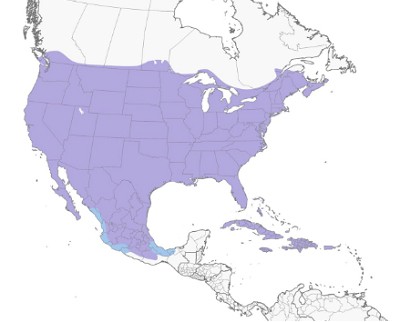
2. Northern Cardinal
It is easy to spot the bright red plumage of the male Northern Cardinal and distinguish them from their lifelong female partners with pale orange-brown feathers and hints of red on their wings, tails, and crest. Both sexes have a prominent head crest and thick bill.
You can find these birds in suburban gardens, forest clearings, thickets, woodland edges, and semi-open habitats around Texas. Northern Cardinal is native to the state and stays year-round.
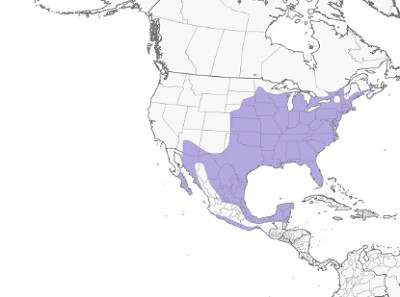
3. Mourning Dove
These light gray-brown birds have thin tails and black spots on their wings. They are fairly small and display their length tapered tails and white tips in mid-flight. Before flying and landing, these birds will create loud whistling sounds with their wings to scare predators and notify flock members.
Mourning Dove is found everywhere in Texas and is considered the most common game bird in the country. They frequent farms, roadsides, grasslands, and other open spaces dotted with trees.
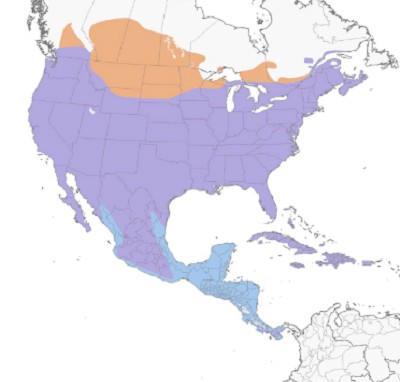
4. Bluejay
These birds’ bright blue plumage and head crest with a black necklace and wing markings are familiar to anyone living in North America. Both sexes have the same features, including the white underparts, white bar and flecks on the wings, black eye line, and bill.
Bluebirds have a diverse variety of vocalizations and impressive mimicking abilities. They are social birds that mingle with people, freely expressing their noisy and aggressive behavior. They inhabit human settlements throughout East Texas, continuously expanding their range to the west as habitat modifications occur.
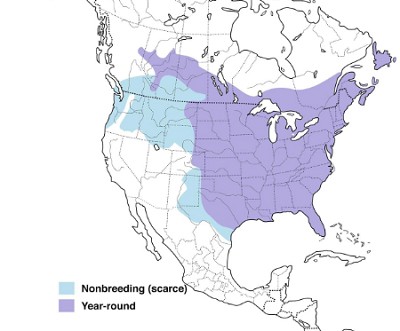
5. House Finch
The House Find is one of the widely known small birds in Texas. Males have rosy feathers around their faces and upper breasts, distinguishing them from the plain gray-brown females. They share the notched tail with other finches.
Since these birds are permanent residents in Texas, you can spot them everywhere in the region and across the continent in cities and suburbs. In rural areas, they prefer areas where ranching is prevalent and agriculture is bountiful.
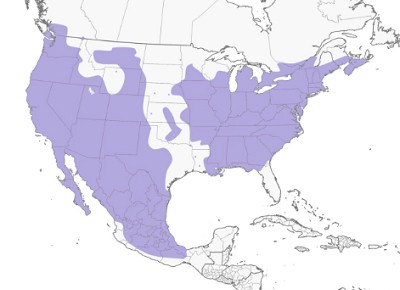
Land Birds
What are land birds? These avian species spend most of their lives in terrestrial environments. This includes raptors, songbirds, ground-feeding birds, perching birds, and tree-dwelling birds.
More than 300 or around 52% of the bird species in Texas are land birds. Other than backyard birds, we have 6 land bird species you can easily spot in Texas.
6. Red-tailed Hawk
True to their name, these raptors are characterized by rusty red tails with a dark brown streaked belly band and a lighter shade on their chest. Their highly variable plumage color and patterns sometimes make it challenging to distinguish them. Listen for their long raspy screaming call to further confirm their presence.
Red-tailed Hawks are diurnal raptors regularly seen in North America. This broad-winged soaring hawk species is common in Dallas, Texas. They frequent open habitats such as roadsides, mountains, plains, and scattered clearings.
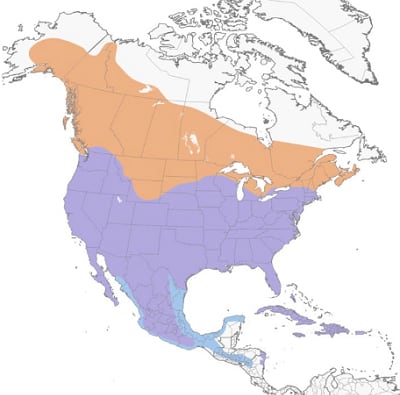
7. Harris’ Hawk
This large raptor has a noticeably dark brown body with rusty shoulder patches extending to its wings and vivid yellow legs and bills. If you are lucky to witness their flight, you can observe its apparent white rumps.
Harris’ Hawks are rarely seen in North Texas since they visit and inhabit tall structures in the south and west areas more. These birds hunt in groups of five to six, wearing down their prey before catching it.
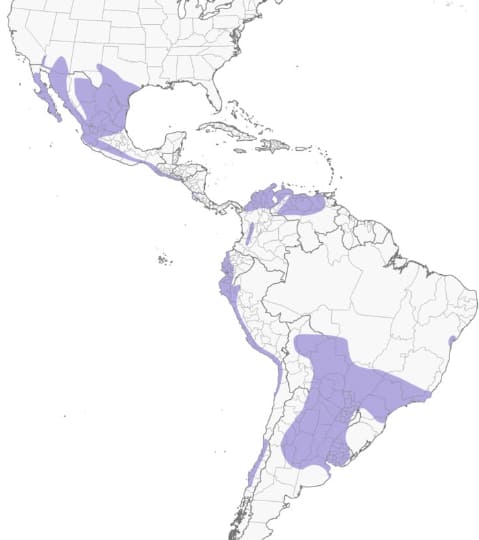
8. Red-Shouldered Hawk
It is easy to spot this medium-sized hawk species with its dark and white checkered-patterned wings. There are white bands on its narrow black tail and an exceptionally red breast. This raptor’s red underside is also pretty noticeable, especially when in mid-flight.
Red-shouldered Hawks are permanent residents of East Texas. They prefer high places in woodlands and forested areas near rivers and streams. Their nests are made of sticks and built between two branches of large trees.
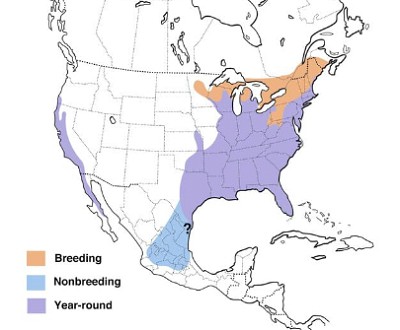
9. Peregrine Falcon
Most commonly referred to as the peregrine, this falcon has dark plumage with a blue-gray tinge on its upper wing and upper tail. Their black sideburns, wide mustaches, barred underparts, and dark head are distinct and make them easily distinguishable. Juvenile ones also have a solid brown area on their forehead and crown.
Peregrine Falcons are known for their high-speed dive, which can go beyond 200 miles per hour. You can observe them in tall structures such as skyscrapers, cliffs, and water towers all over the country, but especially along the coasts. In Texas, they mainly inhabit the Trans-Pecos region, as it’s where their breeding season takes place.
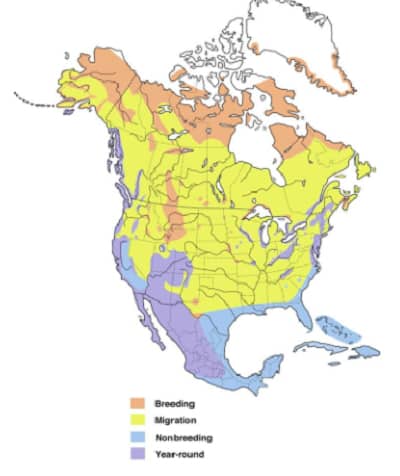
10. Colima Warbler
The Colima Warbler’s pale plumage should not be confused with its two close relatives. You can identify them with their scarlet head patch, yellow upper tail, and distinct foraging song.
This Texas songbird can only be seen in the small corner of the Big Bend National Park and at the high elevations of the Chisos Mountains in the summer. They are sluggish and will look for food sources in dense undergrowth. As such, it will require patience and a lengthy and challenging journey to view these birds.
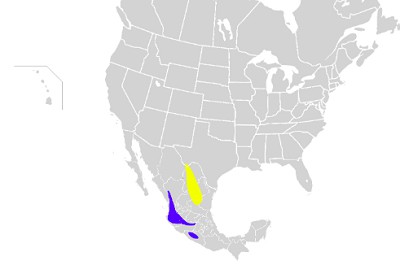
11. Golden-cheeked Warbler
Its bright yellow cheeks, white breast, and gray back and head are undeniably the distinctive feature of this rare songbird. The males have brighter yellow cheeks and black plumage. You will hear their songs as they forage in high limbs and treetops.
The Golden-cheeked Warbler population can only be found in the juniper-oak trees in protected woodlands of the Texas Hill Country in central Texas. In Austin, Texas, the species is protected by a major urban habitat plan, the first in the country.
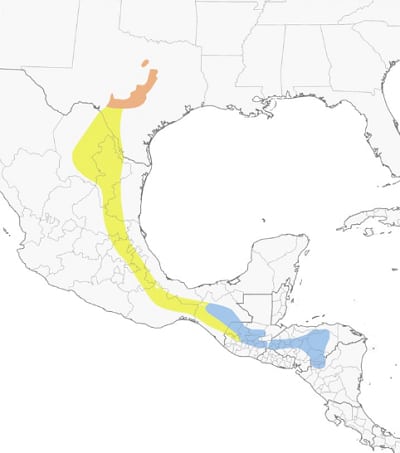
Water Birds
Water birds are also called aquatic birds. These avian species inhabit wetlands, lakes, rivers, dams, and sometimes freshwaters. There are several types of water birds, namely seabirds, diving birds, shorebirds, waterfowls, waders, and aquatic raptors.
Out of approximately 600 birds that live in Texas, 22% (or roughly 130) are water birds. Here are six aquatic birds that are widespread around South Texas and nearby.
12. Mallard
This medium-sized wild duck is familiar to many of us. The male has a shiny dark green head, white collar, brown breast tinge with purple, and a yellow-orange bill with black tips. Females have buff eyebrows, necks, throats, and cheeks. Their mottled brown coloration shows sharp contrast for each feather.
Mallard Duck has the most abundant population, mainly in the Northern Hemisphere. These waterfowls are frequently spotted in wetlands, marshes, ponds, bays, rivers, and any aquatic habitat, preferably fresh bodies of water. These ducks are commonly hunted for sports because of their plentiful numbers.
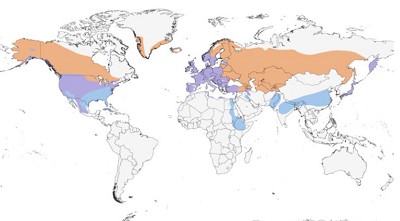
13. Northern Pintail
Northern Pintails have an elegant silhouette that features slim and long necks. Males have white breasts and throats, cinnamon-brown heads and necks, and green inner wing feathers. Females, on the other hand, are mainly brown.
Northern Pintails are fast and efficient fliers, thus, earning the nickname “greyhounds of the air”. You can spot these waterfowls in prairie potholes and tundra ponds across northern areas, particularly along the High Plains. They are observed as early migrators, often choosing Texas as one of their wintering grounds.
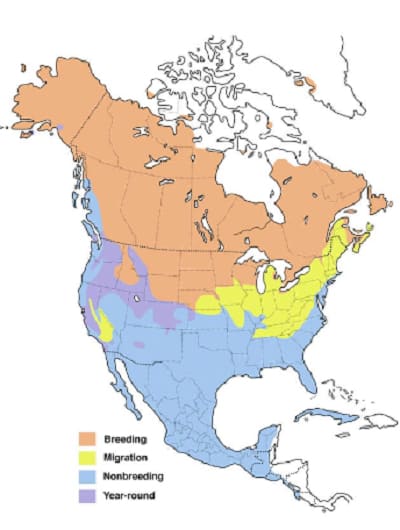
14. American Coot
Unlike most ducks that have webbed feet, American Coots have lobbed feet. Other distinguishing features of these waterfowls are the rounded head, slanted bill, short wings, and tiny tails. Both sexes look alike and share the same red eyes and black plumage.
These birds of Central Texas can be seen in any body of water in the state, from marshes and lake edges to ponds and reservoirs. They are exceptionally greater in number during the migrating season in the region.
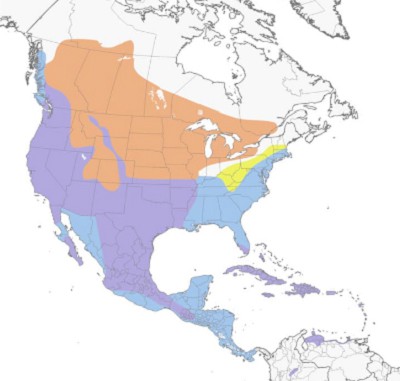
15. Wood Duck
Male Wood Ducks are a spectacular sight to see with their red eyes, green crest, and white spots on their brown breast. Unsurprisingly, they are considered North America’s most attractive and colorful waterfowl. Females might not be as colorful as the males, but the blue wing patch and teardrop eye patch are nonetheless beautiful.
These ducks occur near freshwater sources, like swamps, rivers, and streams close to wooded areas. You will find tons of Wood Ducks in Texas during the breeding season, building nests in old cavities and nest boxes.
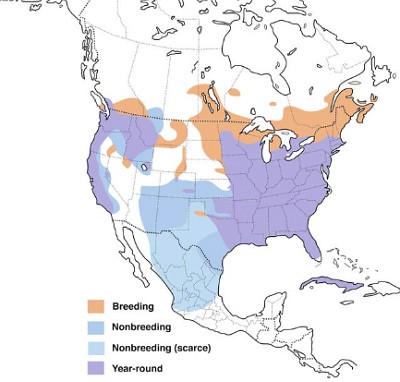
16. Hooded Merganser
The characteristic fan-like head makes the head of these small ducks look like they have hoods. You will also notice their thin bills and crest further, making their head seemingly bigger.
Male Hooded Mergansers have tawny flanks, yellow eyes, black heads with white patches, and white breasts, while females are paler with mohawk-like feathers on their heads.
Out of the three mergansers in North America, this species is the smallest. These waterfowls commonly live in the small freshwater ponds and rivers of the upper Texas Coast and move to larger marshes during the summer.
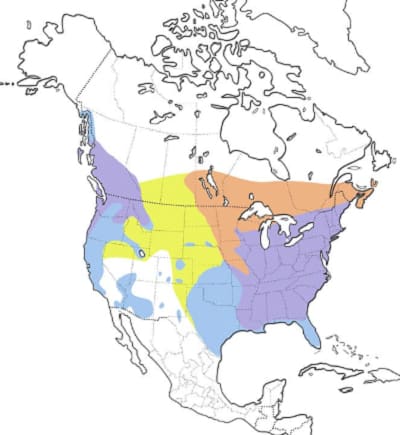
17. Great Egret
A member of the heron family, the Great Egret is an all-white waterbird that stands tall. They have black legs, yellow-orange bills, long and sharp bills, and S-curving long necks. These shorebirds’ long waddling legs can stretch beyond the tip of their short tails.
There is a Great Egret on every continent except Antarctica and throughout the year in Texas. You can find these carnivorous birds in saltwater and freshwater habitats, nesting in high trees and hunting fish at an impressive speed.
Bird Migration In Texas
There is an abundant and diverse avian population in Texas. It is a paradise for many bird watchers trying to identify and see all 679 bird species dispersed around the state. Even if you don’t have time for birdwatching, you can still enjoy a wide variety of backyard birds that are present all year round.
Aside from some species we mentioned earlier, here are other common all-year wild birds in Texas.
- Carolina Chickadee
- Pine Siskin
- Cedar Waxing
- American Goldfinch
- Tufted Titmouse
- Dark-eyed Junco
- European Starling
- Eastern Phoebe
- Downy Woodpecker
- Yellow-rumped Warbler
- Carolina Wren, and a lot more!
Around 80% of migrating birds in North America travel over the southern coast of Texas, making occasional stopovers. Almost half of the documented species in its territory are Nearctic-Neotropical migratory birds. The number proves that there is always a migrating bird flying over or stopping by Texas.
The Upper Texas Coast is busy during migration season. It starts around early March for spring migrants like the American Golden Plover, Barn Swallow, Northern Parula, and Black-and-white Warbler.
Once April reaches its second week, spring migration is in full swing, with Cerulean Warbler and Hudsonian Godwit coming mid-spring. You can see many bird species until late May, like the Bay-breasted Warbler, Olive-sided Flycatcher, and Magnolia Warbler.
May and June are busy months for the resident bird breeding and nesting season. Once July rolls in, shorebird migration begins. Piping Plovers and Semipalmated Sandpipers arrive. Empidonax flycatchers, Broad-winged Hawks, and Chimney Swifts appear in August and September.
The fall migration can extend until late November. In winter, many wintering birds can be spotted all over the state, from sparrows to gulls and hawks. Birders take this opportunity to bird watch Texas birds with a few leaves obscuring their views.
Conclusion
Did you enjoy reading about the common birds in Texas? From backyard birds to land birds and water birds, we have introduced some notable avian species in these categories.
If you live in Texas or are visiting for a while, explore the state, and try bird sighting and identification. How many birds can you recognize, and how many are you seeing for the first time? You can come back here and share your stories with us!
Common Birds in:

George and I became friends after a birdwatching trip with our new group. And we have been enjoying every adventure together. When he told me the idea of establishing a site that shares our experiences and fun, I immediately agreed. After trials and errors, here we have Thayerbirding.


